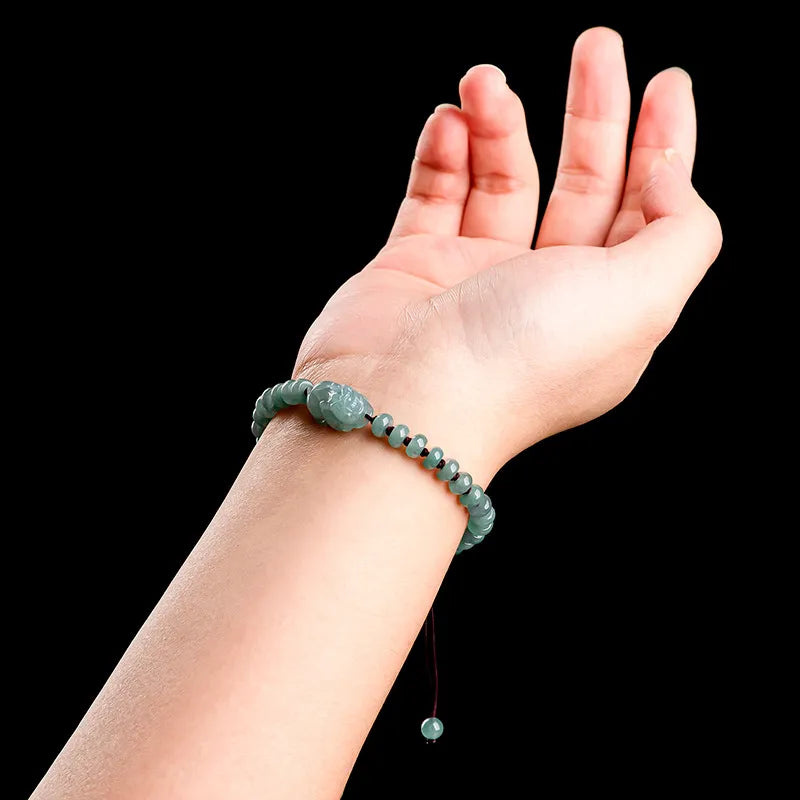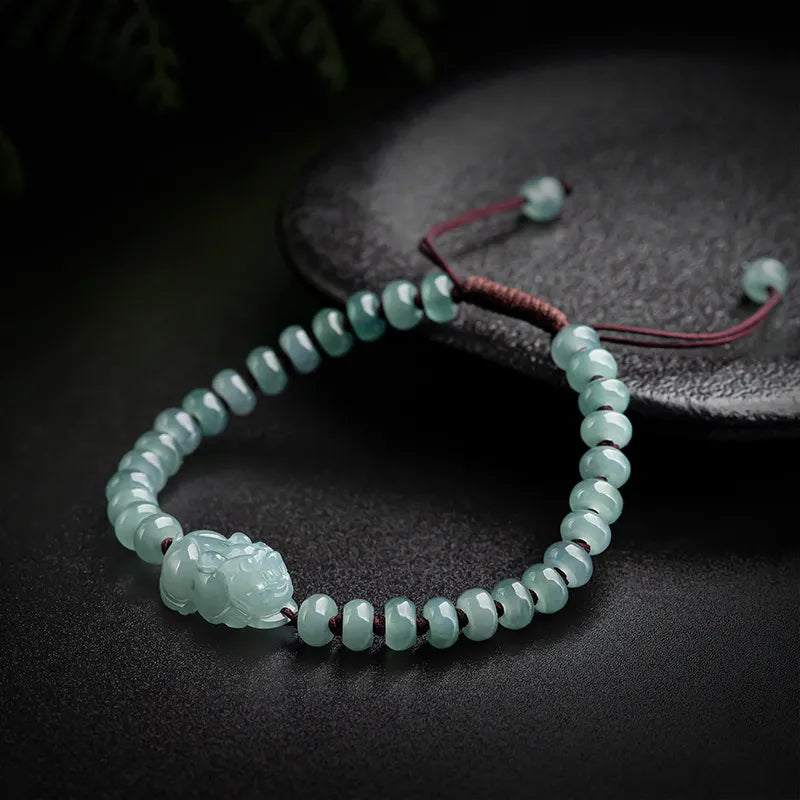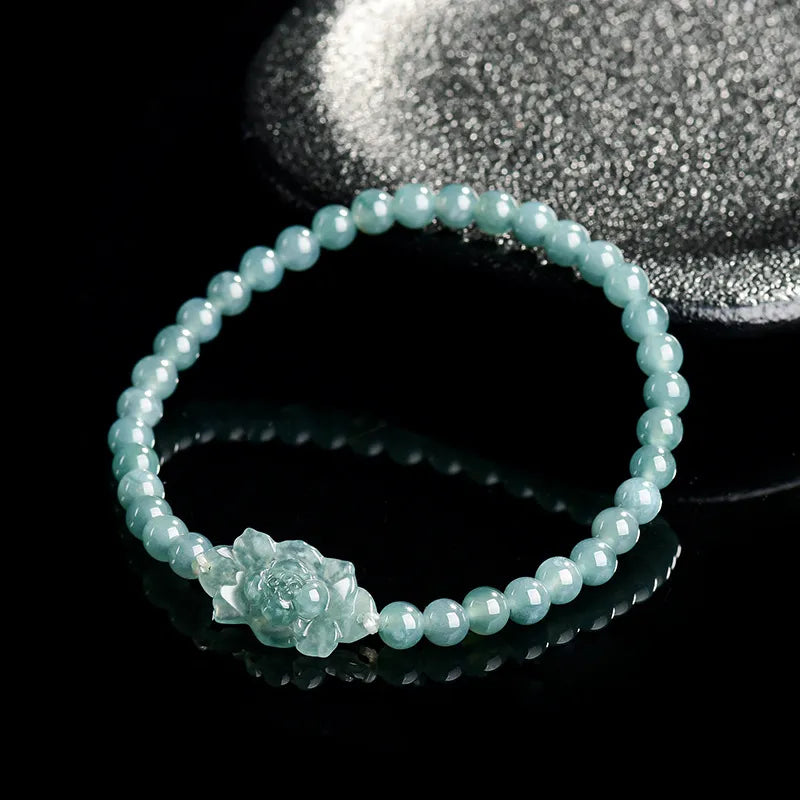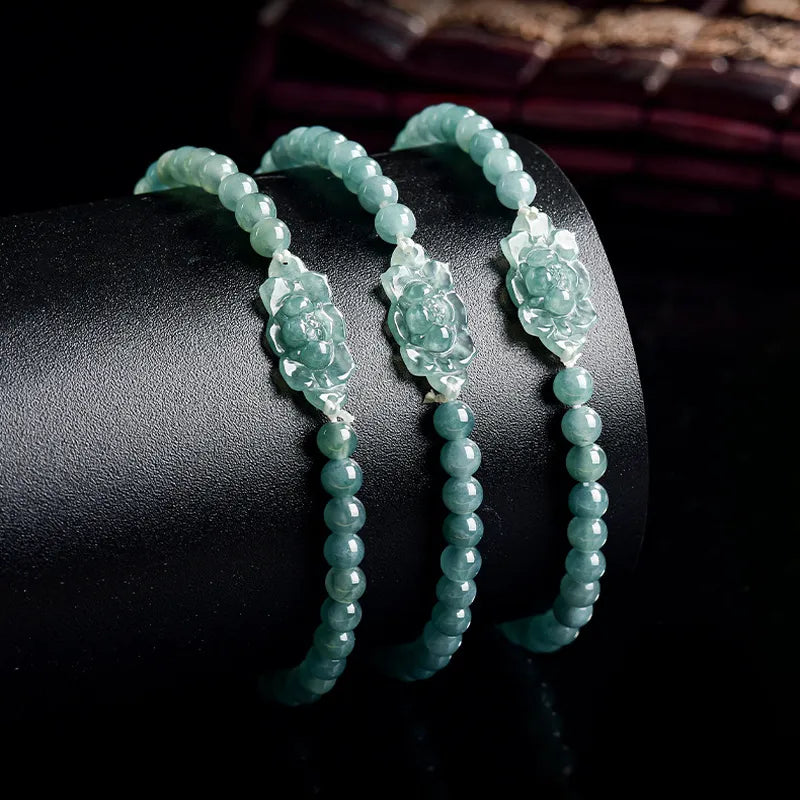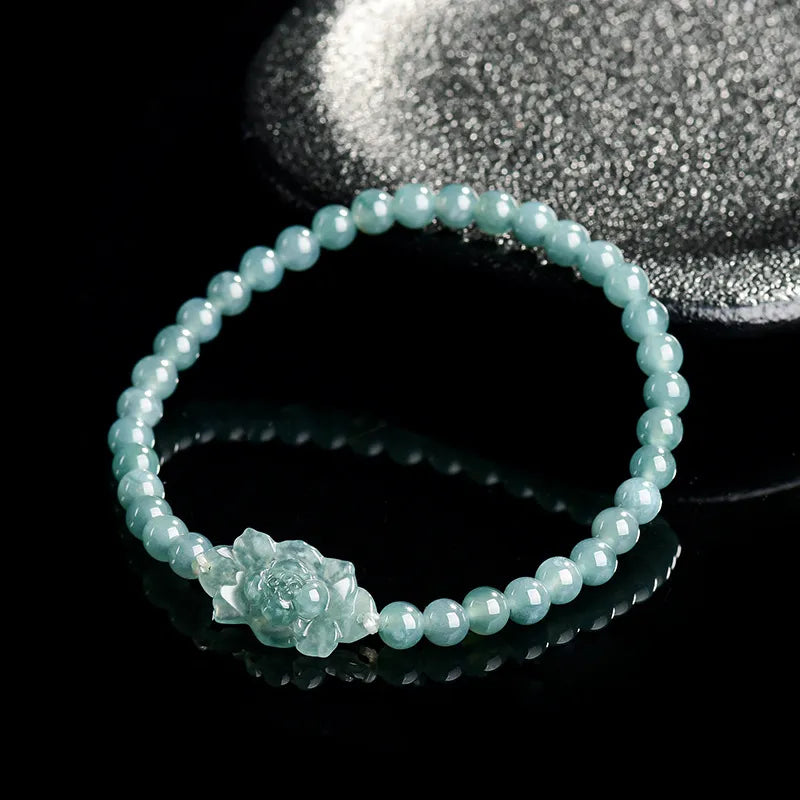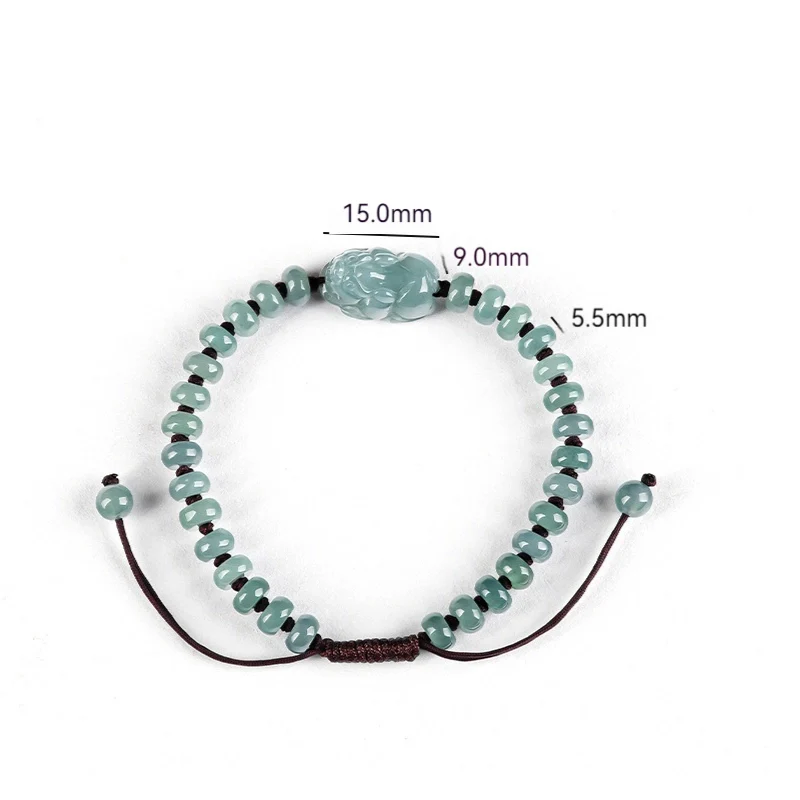Matching Jade Bangle Inner Diameter to Wrist Size: A Practical Guide
Selecting the right inner diameter for a jade bangle depends on both wrist circumference and hand anatomy. Unlike rigid materials, jade’s brittleness requires precise sizing to ensure comfort and prevent breakage. Below, we explore how wrist dimensions, bone structure, and lifestyle factors influence the ideal fit.

1. Determining Wrist Circumference for Bangle Selection
Wrist size serves as the foundation for calculating the appropriate bangle diameter.
- Standard Measurement: Use a flexible measuring tape to wrap around the widest part of your wrist, typically just below the hand bone. Record the measurement in millimeters. For most adults, wrist circumferences range from 140mm to 180mm.
- Adjusting for Thickness: Jade bangles require additional space to slide over the hand. Add 10–15mm to your wrist measurement if the bangle has a standard thickness (5–8mm). For wider profiles (over 8mm), increase the buffer to 15–20mm.
- Posture Impact: Measure while sitting with your arm relaxed. Tensing muscles or bending the wrist can artificially reduce circumference, leading to undersized bangles.
Common Error: Over-tightening the measuring tape may result in a bangle that feels constricting during daily activities.
2. Hand Anatomy and the Widest Slide-Over Point
Even with an accurate wrist measurement, the bangle must fit over the hand’s widest section.
- Knuckle and Thumb Joint: Make a loose fist with your thumb tucked against your palm. Measure the circumference around the knuckles and thumb base. This mimics the narrowest point for sliding the bangle on.
- Comparing Ratios: If your knuckle circumference exceeds your wrist size by more than 20mm, prioritize the knuckle measurement. For example, a 160mm wrist with 185mm knuckles may need a 65–70mm diameter bangle.
- Shape Adaptation: Oval or elliptical bangles often fit better than circular ones for those with pronounced knuckle differences. Trace your hand’s outline and compare it to the bangle’s inner shape.
Testing Tip: Cut a paper strip shaped like a bangle’s inner curve. Test if it slides over your hand without bending or forcing.
3. Temperature and Swelling Effects on Fit
Wrist and hand size can fluctuate due to environmental or physiological factors.
- Daily Variations: Measure in the evening when hands are slightly swollen from daily activity. Morning measurements may underestimate the required size.
- Climate Considerations: Hot weather or high humidity can cause temporary swelling. If you live in a humid region, opt for a bangle 1–2mm larger than your baseline calculation.
- Health-Related Changes: Conditions like arthritis, pregnancy, or fluid retention may alter wrist size. Consult a healthcare provider if you need a bangle for therapeutic use and experience frequent swelling.
Flexibility Check: A well-fitted bangle should rotate slightly on the wrist but not slide off when the hand is raised.
4. Activity Level and Bangle Security
Lifestyle habits influence how loosely or tightly a bangle should fit.
- Sedentary Use: For office work or casual wear, a snug fit (1–2 finger-width gap between skin and bangle) prevents sliding.
- Active Lifestyles: Runners, climbers, or manual laborers may prefer a looser fit (2–3 finger-width gap) to avoid constriction during movement.
- Sleeping Comfort: If wearing the bangle overnight, ensure it doesn’t dig into the skin. A slightly looser fit reduces pressure on nerves and blood vessels.
Safety Note: Never wear a bangle so tight that it leaves marks or restricts circulation.
5. Verifying Fit with DIY Methods
Without professional tools, these at-home techniques help confirm the right size.
- Existing Jewelry: If you own a well-fitting bangle, measure its inner diameter with a ruler. Compare this to your wrist-plus-buffer calculation.
- String and Ruler: Wrap a non-stretchy string around your knuckles, mark the overlap, and measure the length. Divide by 3.14 (π) to estimate the required diameter.
- Paper Template: Cut a strip of paper 2cm wide and long enough to wrap around your knuckles. Tape the ends to form a circle and slide it over your hand. Adjust the size until it fits comfortably.
Precision Tip: When in doubt, choose a bangle 1–2mm larger than your calculated size. It’s easier to tighten a loose bangle (with professional help) than to resize a cracked one.
Final Considerations for Long-Term Wear
Jade bangles require a balance between security and comfort. Prioritize ease of movement over strict adherence to measurements, as jade’s fragility leaves little room for error. Regularly check the fit if your body or lifestyle changes significantly, such as during pregnancy or weight fluctuations. A well-sized bangle should feel like a natural extension of your wrist, neither too loose to spin nor too tight to irritate.
